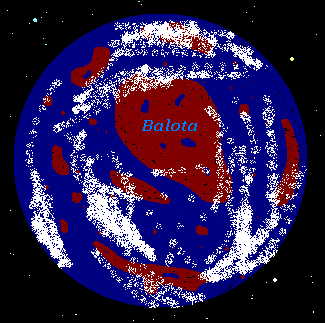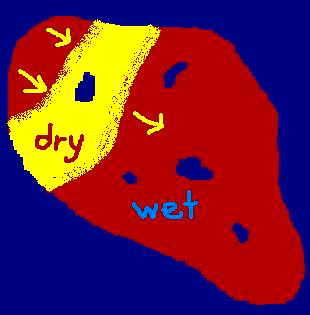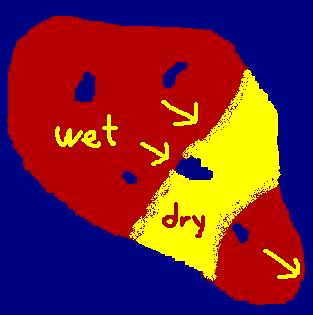|
Modern Zlerin or, The Forrik Fiasco and its Final interFerence-Free Fixing by Ellen Schuler Bio 103 BIOL 103 Biology in Science Fiction, 9 December 2003 the following is an excerpt from "Encyclopedia Zlerina" by Galactic High Biologist Velichestvennui Yozh of the Cian Clan on Cialia Prime, as translated by Ellen Schuler Zlerin is a small planet in the constellation Ursa Major, heated by a more or less Sol-like star, 47 Ursae Majoris (1). Zlerin's current biosphere is the result of about 4 billion years of evolution (2). The previous biosphere, including the sentient race of Zurks who originally colonized the planet, was unfortunately decimated 4.5 billion years ago via intergalactic weapons of mass destruction in the "hands" (technically pseudopods, my studies lead me to believe) of an overzealous alien inspector with a metaphorically twitchy trigger finger. The new biosphere ("Zlerin II," as I have dubbed it), while still somewhat primitive, illustrates known biological principles at work, thus providing evidence that I am correct in my hypothesis for the universality (perhaps even multiversality) of these principles. My studies on Zlerin have been centered on the biology of the main landmass of the planet, called Balota.
Balota's weather patterns vary wildly from season to season, but they follow a fairly stable cycle of 4.12 Cia years [equivilant to 2 Earth years]. Due to upper atmosphere wind patterns that I have yet to fathom (the famous Cian meterologist Oozhasnaya Kasha has plans to examine Zlerin weather systems as soon as she concludes her study of Lavnavavan waterspouts next year), a steady system of drought moves across Balota, replacing the usual marshy conditions, twice a Cian year.
As the weather system moves across the continent, affected areas experience about three months of no precipitation before the rains return. All of Balota's streams and shallow lakes in the arid zone temporarily dry up, and all organisms either have evolved to store water, or they migrate into wetter regions. The Balotan lifeforms have evolved to flourish in these unusual conditions, despite interfering efforts of aliens with good intentions. The following links provide a sample of the more common Balotan species, as well as evidence that alien ecological interference is both uniwise and unnecessary.
|


